
A bright corner in Syrian Girls' future
Discussing gender roles with Syrian refugee teenagers.

A bright corner in Syrian Gilrs' future
A complicated life
In a normal world where there is no conflict, young girls are usually exposed to fairy tales that teach them girls are only meant to become good mothers and housewives with no future prospects of their own, giving girls a stereotyped idea about their roles and potential in their communities.
In a refugee’s world, the situation is even more complicated. Wars, violence and poverty put refugee children at risk of being deprived of education. There are 1.2 million Syrian refugee children in Turkey, but over 400,000 children are out of school according to UNICEF. Meanwhile, the UN states that 26.6 percent of Syrian women between 15-24 got married at the age of 15 despite the fact that child marriage is illegal in Turkey. The situation seems dark and the future of many young Syrian refugee girls does not look promising, but a small group of Syrian girls in Hatay, Turkey, is a silver lining.
Funded by Danmarks Indsamling, the Danish Refugee Council (DRC) held the “Alternative Fairy Tale” activity with 10 Syrian girls aged 13 to 17. The eight sessions discussed gender roles and codes in traditional fairy tales through art and role-play to raise girls’ awareness of gender and child marriage.
“We had previous sessions with that category,” said Gozde Paltaci, DRC’s psychosocial support officer and the facilitator of the “Alternative Fairy Tale.
“They felt they had little roles in their communities and we wanted them to value themselves as young females by talking about gender in fairy tales.”
The facilitators tried to reveal the hidden gender codes in fairy tales that we have been reading for years and raise questions about them in their discussions. Sixteen-year-old Najwa talked about the stereotyped image of women in TV series and stories.
“Women are not represented in a good way because they always appear as witches, while men are represented in a positive way,” she said.
“People should know that women are actually different from the way they are portrayed in front of cameras.”
Her friend Amira (17 years old) also talked about women’s representation.
“Women are always portrayed as weaker than men, which is not true,” she said.
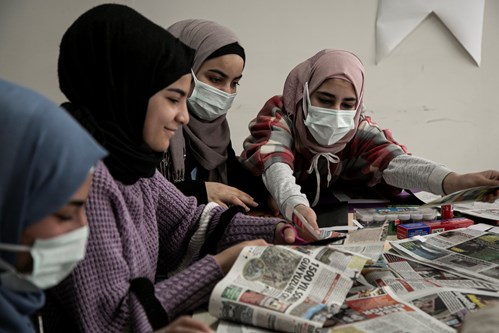

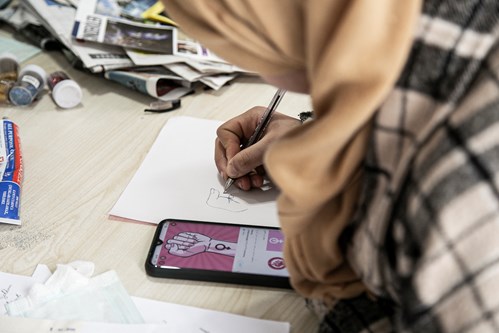

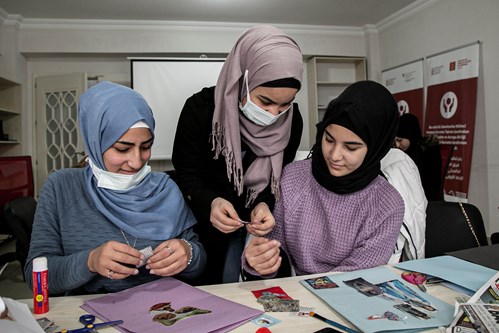



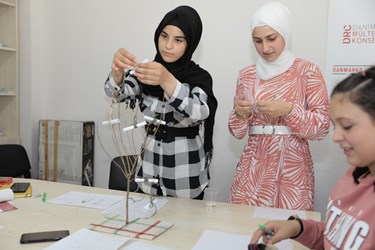

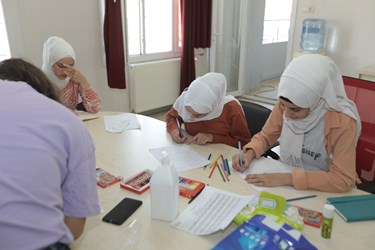



No vulnerable princesses
Over time, the girls started to overcome their shyness and made their voices heard. They were no longer vulnerable princesses, but capable young women with goals and dreams. Some of them were afraid of working in fields dominated by men like engineering, but they are not anymore.
“Half of the communities consists of women,” says seventeen-year-old Fatima.
“This world means nothing if there are only men.”
The girls developed more by time. Each of them started to talk about other topics that touch the world such as racism and bullying.
“We are all a part of this world,” said fourteen-year-old Sabah.
“We don’t need to be cruel to each other.”
On the last day of the activity, the girls wrote their own stories and created their own collages. They expressed their ideas, personalities and goals.
Each story and collage were different from each other.
“I know now that they will have powerful roles in the future,” said Gozde Paltaci.
“I am hopeful about those girls.”
The girls are now more open to discussing with their parents their ideas and what they have learned – a step towards a better future. DRC is planning to have a special committee for adolescent girls and hold more activities to ensure that girls have a better future.
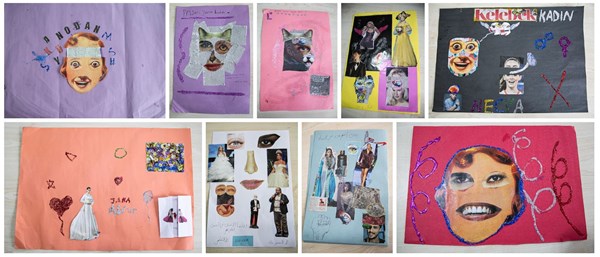
Read more
